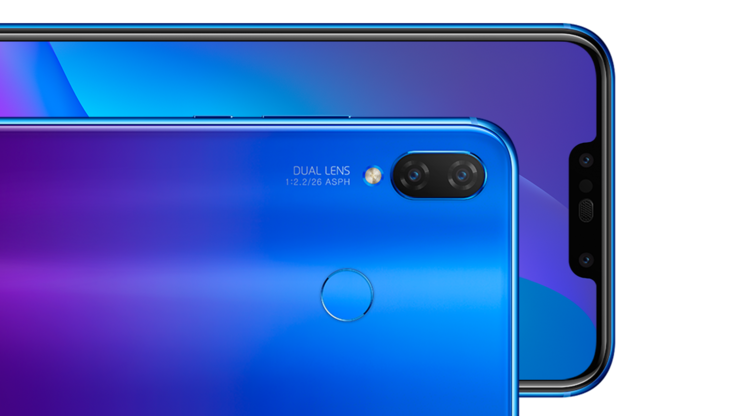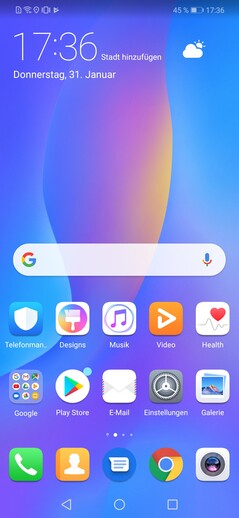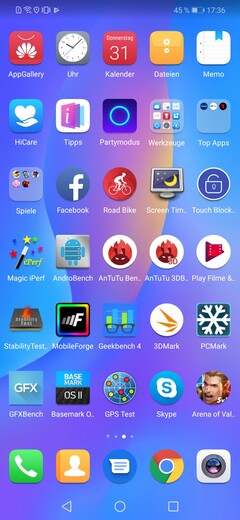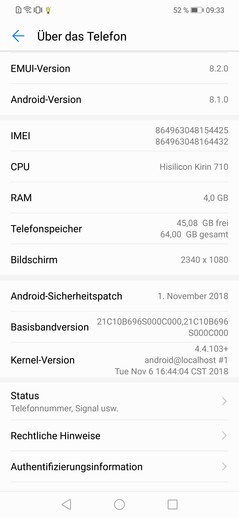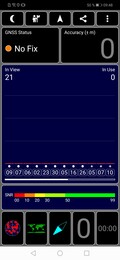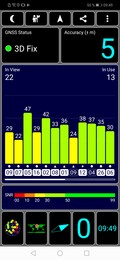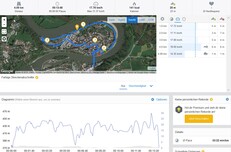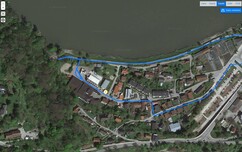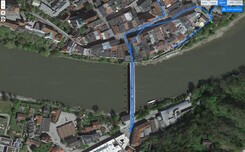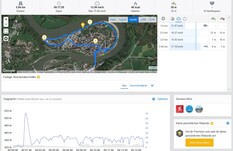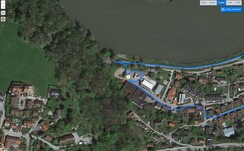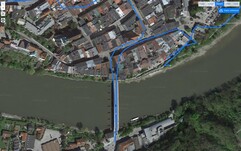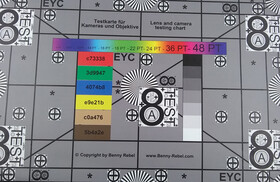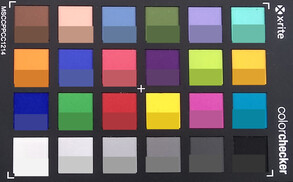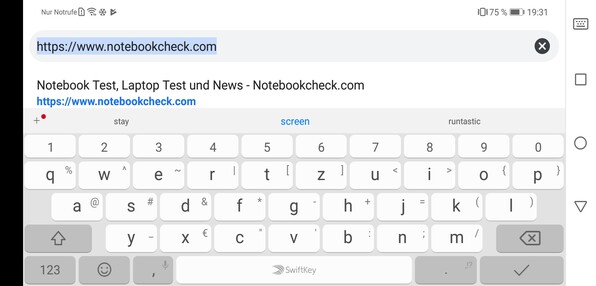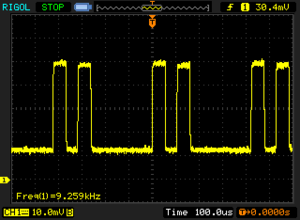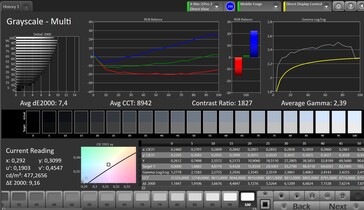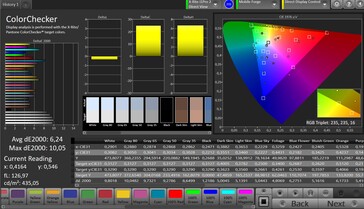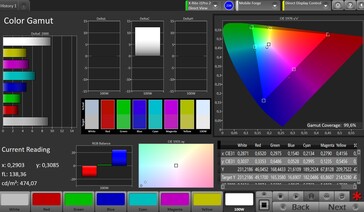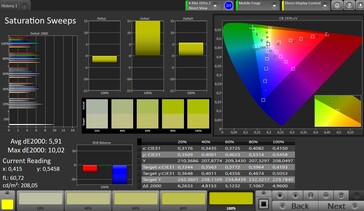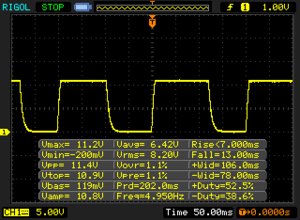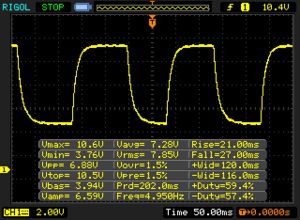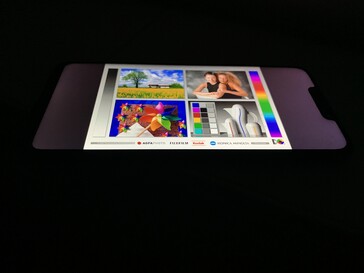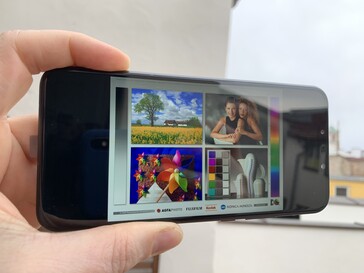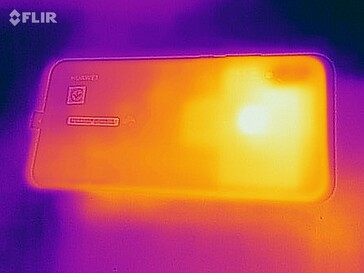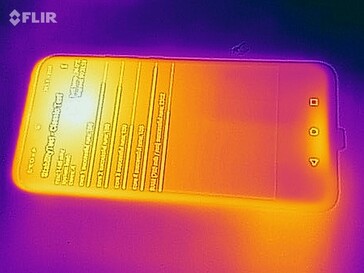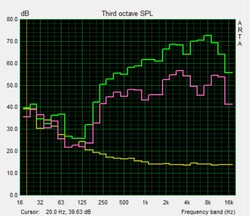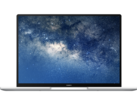Huawei P Smart Plus (2018) Smartphone Review

The Huawei P Smart (2018) was a veritable success for the Chinese company, which we reviewed almost a year ago. No wonder, because the midrange smartphone combined solid performance with good connectivity at a comparatively affordable price. Huawei has since released its successor, the P Smart (2019), which we covered at the end of last year.
However, the company also released a slightly larger and better-equipped version of the P Smart (2018), which is the focus of this review. The P Smart Plus (2018), which is also known as the Nova 3i in some markets, offers almost top-class performance but only at just over €200 (~ US$230). Our tests will decide which of the P Smart devices is the best value for money and whether the P Smart Plus (2018) can challenge its smaller successor.
We have chosen to compare the P Smart Plus (2018) against other comparably priced and equipped smartphones. Our comparison devices are the P Smart (2018), the P Smart (2019) and the Xiaomi Redmi Note 6 Pro. We will also consider the P Smart Plus (2018) against the considerably more expensive Mate 20 Lite.
Case
The P Smart Plus (2018) looks like the intermediate step between the P Smart (2018) and the P Smart (2019). While last year’s P Smart still had a comparatively conservative design with its broad top and bottom bezels, the P Smart (2019) has a small waterdrop notch like on the OnePlus 6T and a narrow bottom bezel, which are both in keeping with current smartphone trends.
By contrast, the P Smart Plus (2018) has a wider notch than the P Smart (2019) but an equally narrow chin. Our test device is also noticeably larger than its sibling and marginally bigger than the P Smart (2019). The P Smart Plus (2018) is 26 g (0.9 oz) heavier than the P Smart (2018) too, but only 9 g (0.3 oz) heavier than this year’s P Smart. The Mate 20 Lite and Redmi Note 6 Pro are a few grams heavier than the P Smart Plus (2018) though.
Huawei currently sells the P Smart Plus (2018) in black or Iris Purple. The latter has a blue and purple gradient finish that we have seen on other smartphones like the Mate 20 Pro in the last year. The black version has a mirrored finish, but the P Smart Plus (2018) looks more restrained and should fit in with any environment. Our test unit has well-rounded edges too, which make the device fit well in our hands.
Moreover, our test device is built to a high level with only the strongest of pressure on the back case causing the screen to deform slightly. We could not twist the P Smart Plus (2018) either; such is its structural stability.
Connectivity
Huawei equips the P Smart Plus (2018) with 64 GB of storage and 4 GB of RAM, which is a higher volume combination than its P Smart counterparts and on par with some of the best-equipped devices at this price point. The P Smart Plus (2018) is a dual-SIM device too and supports up to 64 GB microSD cards if you need to expand the 64 GB of internal storage. The device has a Hybrid second SIM slot though, so you must choose between dual-SIM functionality and microSD card expansion.
It is also worth keeping in mind that the P Smart Plus (2018) can only format microSD cards as external storage, which restricts you to storing apps and data only on the device’s internal storage. The P Smart Plus (2018) supports exFAT formatting though, which means that the device can read files that are larger than 4 GB. Not all smartphones at this price can do this.
Software
The P Smart Plus (2018) ships with Android 8.1 Oreo, on top of which Huawei adds EMUI 8.2.0. Our test device had 1 November 2018 Android security patches installed at the time of testing, which were around 2 months old. There is already an Android 9 Pie Open Beta available for the Chinese market, but Huaweiblog.de reports that Huawei will release a system update sometime in Q2 2019.
The UI of EMUI 8.2.0 is subtly different from stock Android, but the changes are suitably minor that most people should acclimatize quickly if they are familiar with other versions of Android. Huawei includes a Tips app too, which can help you familiarize yourself with EMUI and its more esoteric features. It is worth keeping in mind before using the app that Huawei requires numerous permissions for it to run. The company includes a handful of tool apps too including a compass, a front-facing mirror, and a voice recorder.
Huawei also pre-installs its AI features that make the P Smart Plus (2018) "smart", including the default camera app’s intelligent scene recognition and 3D Qmojis, which are akin to Apple's Memojis. You can use the pre-installed Amazon app to scan objects that you would like to add to your basket too. Additionally, the P Smart Plus (2018) has an intelligent image search feature, which recognizes people in pictures, for example. We have seen most of these software features from other Huawei devices, but the company reserves some of its fancier software tricks for its more expensive devices.
Communication & GPS
If you like fast Wi-Fi, you should look elsewhere as the P Smart Plus (2018) averaged only around 50 MBit/s in our tests. Moreover, the device lacks support for ac Wi-Fi or 5 GHz networks, which the P Smart (2019) utilizes. Incidentally, the latter achieved up to 4 times faster transfer speeds in the iperf3 Client Wi-Fi tests that we conducted.
By contrast, the P Smart Plus (2018) supports an identical number of mobile bands and frequencies, while it can also theoretically reach higher network speeds. You may only notice this if you use plenty of bandwidth though. Unfortunately, the P Smart Plus (2018) supports just a few LTE bands, so you may struggle to connect to LTE networks if you travel outside of Europe.
| Networking | |
| iperf3 transmit AX12 | |
| Xiaomi Redmi Note 6 Pro | |
| Huawei Mate 20 Lite | |
| Huawei P Smart 2019 | |
| Huawei P Smart Plus | |
| Huawei P smart | |
| iperf3 receive AX12 | |
| Xiaomi Redmi Note 6 Pro | |
| Huawei Mate 20 Lite | |
| Huawei P Smart 2019 | |
| Huawei P Smart Plus | |
| Huawei P smart | |
Our test unit cannot locate us indoors, but outdoors it finds a satellite fix with up to 5 meters (16.4 ft) accuracy after a short delay. In short, this is what we have come to expect from smartphones at this price.
We also took the P Smart Plus (2018) on a bike ride with the Garmin Edge 520 to test the former’s GPS accuracy. The P Smart Plus (2018) performed well overall and even tracked us more accurately on our looped section than the Garmin did. Our test device kept pace with us through narrow streets and over a bridge too, which is impressive. Overall, the P Smart Plus (2018) is accurate enough for all general navigation tasks.
Telephone Features & Call Quality
The P Smart Plus (2018) supports VoLTE and VoWiFi, but your carrier must provision the device on its network for either technology to work. Huawei pre-installs its own Phone app, which lacks a dark mode that even the Google Phone app now has. The app is otherwise easy to use and intuitive.
Our test unit delivered mixed results in our call tests. Calls can sound loud over the earpiece or speakerphone, but our call partner’s voice sometimes sounds distorted. Moreover, the microphone struggles to pick our voice out from ambient noise when we speak quietly, and there is noticeably background noise even when speaking at regular volume.
Cameras
The P Smart Plus (2018) offers a significant upgrade in camera technology compared to the P Smart (2018) and even the P Smart (2019). The P Smart Plus (2018) has dual front and rear-facing cameras, which are also comparatively high resolution.
Starting with the front-facing cameras, the main camera is a 24 MP sensor, which is supported by a 2 MP secondary sensor that provides depth of field data to help create Bokeh effect photos or Qmojis. Please keep in mind that the secondary sensor cannot be used as a standalone camera. The color reproduction could be stronger to our eyes, but the 24 MP sensor has a good dynamic range. We can see artifacts and image noise when looking closely at photos though.
The P Smart Plus (2018) also has a 16 MP rear-facing camera that is also supported by a 2 MP secondary sensor. The rear-facing camera takes richly detailed photos as demonstrated by scene 1, in which the camera even captures the fine hair on the plant leaves. The lens has a wide-angle too, with the iPhone XS Max and OnePlus 5T taking narrower pictures. Photos generally look underexposed for our liking though, which results in underwhelming low-light shots.
The rear-facing camera can record videos in up to 4K at 30 FPS and effortlessly adapts its exposure to changing lighting conditions. The image quality is good too, while audio sounds clean. Additionally, the default camera app has a slow-motion video function that can record videos at 120 FPS or 480 FPS for short videos.
We also subjected our test unit to further camera tests under controlled lighting conditions to better compare its camera quality against other smartphones. The photo of our test chart lacks details, while text against colored backgrounds is dominated by artifacts and image noise. Colors are also too pale for our liking.
Accessories & Warranty
Huawei includes a 10 W fast charger in the box, but it is only just powerful enough to carry the “fast charger” moniker. The device comes with a USB cable too along with a SIM tool and a pair of headphones. Huawei does not currently sell any P Smart Plus (2018) accessories.
The P Smart Plus (2018) comes with 24 months manufacturer’s warranty. Please see our Guarantees, Return policies and Warranties article for country-specific information.
Input Devices & Operation
Huawei pre-installs SwiftKey as the default keyboard, which worked well throughout our tests, but you can download another if you prefer. The screen has a glossy finish, but it feels rather cheap and emits a hollow sound when tapped. The touchscreen is responsive even into the corners though, which is good.
The P Smart Plus (2018) has a fingerprint sensor on its back case, or it can be unlocked via Face Unlock. The fingerprint reader worked precisely throughout testing and unlocked our test unit quickly. The Face Unlock system often took longer to authenticate and unlocks the device only to the lock screen, so you still need to wipe to get to the home screen. Hence, the fingerprint sensor is more practical in daily use.
Display
The P Smart Plus (2018) has a 6.3-inch display, which is 0.1 inches larger than the screen in the P Smart 2019. The P Smart Plus (2018) has a 19.5:9 aspect ratio, which means that most videos are sandwiched between thick black bars. This also happens with most modern smartphones that do not have a 16:9 aspect ratio, but videos have smaller bars on the P Smart (2018) thanks to its 18:9 ratio. This is only a minor downside of the P Smart Plus (2018) though.
Our test device achieves an average maximum brightness of 471 cd/m², according to X-Rite i1Pro 2, which is around 20% darker than the display in the P Smart (2018), but 7% brighter than the one in the P Smart 2019. The P Smart Plus (2018) has a more evenly lit display than our comparison devices though, so large areas of color will look more homogeneous.
| |||||||||||||||||||||||||
Brightness Distribution: 94 %
Center on Battery: 479 cd/m²
Contrast: 1774:1 (Black: 0.27 cd/m²)
ΔE ColorChecker Calman: 6.24 | ∀{0.5-29.43 Ø4.78}
ΔE Greyscale Calman: 7.4 | ∀{0.09-98 Ø5}
99.6% sRGB (Calman 2D)
Gamma: 2.39
CCT: 8942 K
| Huawei P Smart Plus IPS/LTPS, 2340x1080, 6.3" | Huawei P Smart 2019 IPS, 2340x1080, 6.2" | Huawei P smart IPS, 2160x1080, 5.7" | Xiaomi Redmi Note 6 Pro LCD IPS, 2280x1080, 6.3" | Huawei Mate 20 Lite IPS, 2340x1080, 6.3" | |
|---|---|---|---|---|---|
| Screen | 16% | -5% | 11% | -25% | |
| Brightness middle (cd/m²) | 479 | 458 -4% | 573 20% | 501 5% | 453 -5% |
| Brightness (cd/m²) | 471 | 440 -7% | 568 21% | 486 3% | 460 -2% |
| Brightness Distribution (%) | 94 | 85 -10% | 89 -5% | 88 -6% | 89 -5% |
| Black Level * (cd/m²) | 0.27 | 0.35 -30% | 0.63 -133% | 0.44 -63% | 0.52 -93% |
| Contrast (:1) | 1774 | 1309 -26% | 910 -49% | 1139 -36% | 871 -51% |
| Colorchecker dE 2000 * | 6.24 | 1.4 78% | 4.2 33% | 2.3 63% | 7.1 -14% |
| Colorchecker dE 2000 max. * | 10.05 | 3.8 62% | 6.4 36% | 6.1 39% | 11.6 -15% |
| Greyscale dE 2000 * | 7.4 | 2.4 68% | 4.6 38% | 1.5 80% | 8.3 -12% |
| Gamma | 2.39 92% | 2.22 99% | 2.24 98% | 2.29 96% | 2.35 94% |
| CCT | 8942 73% | 6235 104% | 7157 91% | 6579 99% | 9082 72% |
* ... smaller is better
Screen Flickering / PWM (Pulse-Width Modulation)
| Screen flickering / PWM detected | 9259 Hz | ≤ 20 % brightness setting | |
The display backlight flickers at 9259 Hz (worst case, e.g., utilizing PWM) Flickering detected at a brightness setting of 20 % and below. There should be no flickering or PWM above this brightness setting. The frequency of 9259 Hz is quite high, so most users sensitive to PWM should not notice any flickering. In comparison: 53 % of all tested devices do not use PWM to dim the display. If PWM was detected, an average of 8108 (minimum: 5 - maximum: 343500) Hz was measured. | |||
The P Smart Plus (2018) also has a low black value, which we measure at 0.27 cd/m². The black value helps the device achieve a 1,774:1 contrast ratio, which is markedly better than our comparison devices and should mean that colors look more vibrant onscreen.
We also subjected our test unit to additional display tests with a spectrophotometer and CalMAN software. The results show that the display has a strong blue tint to it, which is demonstrated by the higher than ideal color temperature. Colors are reproduced reasonably accurately with almost full sRGB color space coverage. CalMAN only gives an approximate value here though, so please take the sRGB color space result with a pinch of salt.
Huawei includes two color modes, and several white balance presets to customize the display to how you want it. There is also a manually white balance mode if you prefer granular control over color reproduction
Display Response Times
| ↔ Response Time Black to White | ||
|---|---|---|
| 20 ms ... rise ↗ and fall ↘ combined | ↗ 7 ms rise | |
| ↘ 13 ms fall | ||
| The screen shows good response rates in our tests, but may be too slow for competitive gamers. In comparison, all tested devices range from 0.1 (minimum) to 240 (maximum) ms. » 42 % of all devices are better. This means that the measured response time is similar to the average of all tested devices (20.2 ms). | ||
| ↔ Response Time 50% Grey to 80% Grey | ||
| 48 ms ... rise ↗ and fall ↘ combined | ↗ 21 ms rise | |
| ↘ 27 ms fall | ||
| The screen shows slow response rates in our tests and will be unsatisfactory for gamers. In comparison, all tested devices range from 0.165 (minimum) to 636 (maximum) ms. » 82 % of all devices are better. This means that the measured response time is worse than the average of all tested devices (31.6 ms). | ||
You should have no problems with using the P Smart Plus (2018) outdoors on cloudy days, and its maximum luminosity should be just bright enough for the screen to remain readable under direct sunlight. However, reflections may overwhelm the display in the summer, so finding a shady spot may be your best bet if you must use your device outside on a sunny day.
The P Smart Plus (2018) has good viewing angles, but there are some color distortions at acute viewing angles. We noticed no brightness or image issues though, so the device should remain readable from almost any angle.
Performance
The Kirin 710 powers both the new P Smart 2019 and the P Smart Plus (2018). The SoC offers upper midrange performance and scored comparatively well in synthetic benchmarks. Our test device generally outperforms the average of Kirin 710 powered devices that we have currently tested too. The Kirin 710 integrates an ARM Mali-G51 MP4 GPU, which beats most other graphics solutions at this price point.
| AnTuTu v7 - Total Score (sort by value) | |
| Huawei P Smart Plus | |
| Huawei P Smart 2019 | |
| Huawei P smart | |
| Xiaomi Redmi Note 6 Pro | |
| Huawei Mate 20 Lite | |
| Average HiSilicon Kirin 710 (124870 - 183420, n=10) | |
| AnTuTu v6 - Total Score (sort by value) | |
| Huawei P Smart Plus | |
| Huawei P Smart 2019 | |
| Huawei P smart | |
| Xiaomi Redmi Note 6 Pro | |
| Huawei Mate 20 Lite | |
| Average HiSilicon Kirin 710 (104012 - 112870, n=8) | |
Our test device handles web browsing smoothly and generally outscores our comparison devices in synthetic browser benchmarks. Overall, we had no issues with our test unit in this regard, and it should load web pages quickly in daily use.
| JetStream 1.1 - Total Score | |
| Huawei P Smart Plus (Chrome 71) | |
| Average HiSilicon Kirin 710 (47 - 55.1, n=10) | |
| Huawei P Smart 2019 (Chrome 70) | |
| Huawei Mate 20 Lite (Chrome 69) | |
| Xiaomi Redmi Note 6 Pro (Chrome 70) | |
| Huawei P smart (Chrome 64) | |
| Octane V2 - Total Score | |
| Average of class Smartphone (2228 - 121337, n=198, last 2 years) | |
| Huawei P Smart 2019 (Chrome 70) | |
| Average HiSilicon Kirin 710 (9041 - 10544, n=13) | |
| Huawei P Smart Plus (Chrome 71) | |
| Huawei Mate 20 Lite (Chrome 69) | |
| Xiaomi Redmi Note 6 Pro (Chrome 70) | |
| Huawei P smart (Chrome 64) | |
| Mozilla Kraken 1.1 - Total | |
| Huawei P smart (Chrome 64) | |
| Xiaomi Redmi Note 6 Pro (Chrome 70) | |
| Huawei P Smart Plus (Chrome 71) | |
| Average HiSilicon Kirin 710 (3999 - 4853, n=13) | |
| Huawei Mate 20 Lite (Chrome 69) | |
| Huawei P Smart 2019 (Chrome 70) | |
| Average of class Smartphone (257 - 28190, n=154, last 2 years) | |
| WebXPRT 3 - Overall | |
| Average of class Smartphone (38 - 380, n=32, last 2 years) | |
| Huawei P Smart 2019 (Chrome 70) | |
| Average HiSilicon Kirin 710 (52 - 69, n=11) | |
| Huawei P Smart Plus (Chrome 71) | |
| Huawei Mate 20 Lite (Chrome 69) | |
| Xiaomi Redmi Note 6 Pro (Chrome 70) | |
| WebXPRT 2015 - Overall | |
| Huawei P Smart Plus (Chrome 71) | |
| Huawei P Smart 2019 (Chrome 70) | |
| Average HiSilicon Kirin 710 (147 - 178, n=5) | |
| Xiaomi Redmi Note 6 Pro (Chrome 70) | |
| Huawei Mate 20 Lite (Chrome 69) | |
| Huawei P smart (Chrome 64) | |
* ... smaller is better
The internal storage also performed well in benchmarks, at least for eMMC memory anyway. The P Smart Plus (2018) achieved comparatively high write speeds too, which impressed us.
By contrast, Huawei has equipped the device with a comparatively slow microSD card reader. Our test unit averaged around 52 MB/s write and 77 MB/s read speed when tested with our Toshiba Exceria Pro M501 reference card, which is consistently beaten by the P Smart (2018).
| Huawei P Smart Plus | Huawei P Smart 2019 | Huawei P smart | Xiaomi Redmi Note 6 Pro | Huawei Mate 20 Lite | Average 64 GB eMMC Flash | Average of class Smartphone | |
|---|---|---|---|---|---|---|---|
| AndroBench 3-5 | -7% | -19% | -12% | -3% | -17% | 499% | |
| Sequential Read 256KB (MB/s) | 303.2 | 288.3 -5% | 269.4 -11% | 278.9 -8% | 304.3 0% | 277 ? -9% | 2227 ? 634% |
| Sequential Write 256KB (MB/s) | 200.5 | 191.4 -5% | 121.1 -40% | 119.9 -40% | 217.3 8% | 178.4 ? -11% | 1848 ? 822% |
| Random Read 4KB (MB/s) | 102.5 | 45.66 -55% | 66.1 -36% | 55.5 -46% | 78.5 -23% | 60.7 ? -41% | 295 ? 188% |
| Random Write 4KB (MB/s) | 74 | 70.7 -4% | 21.3 -71% | 67.3 -9% | 48.78 -34% | 33.8 ? -54% | 334 ? 351% |
| Sequential Read 256KB SDCard (MB/s) | 76.9 ? | 76.2 ? -1% | 82.3 ? 7% | 83.9 ? 9% | 76.4 ? -1% | 77.4 ? 1% | |
| Sequential Write 256KB SDCard (MB/s) | 51.9 ? | 66.9 ? 29% | 72.4 ? 39% | 63.7 ? 23% | 67.8 ? 31% | 58.3 ? 12% |
Games
The P Smart Plus (2018) handles modern games well and can play Asphalt 9: Legends or Arena of Valor smoothly. The GPU supports many graphics APIs too, which should future-proof the device somewhat for a few years.
The accelerometer and touchscreen worked without issue during our gaming tests.
Emissions
Temperature
The P Smart Plus (2018) is generally a cool device, but the top third of the device feels noticeably warmer than the rest of the case even at idle. Our test unit only reaches a maximum of 38.7 °C (101.7 °F) under sustained load though, which should not feel hot to most people. It is worth keeping in mind that the top third reaches a maximum of 33.4 °C (92.1 °F) at idle, so that area will almost always feel warmer than the rest of the device.
(+) The maximum temperature on the upper side is 36.8 °C / 98 F, compared to the average of 35.2 °C / 95 F, ranging from 21.9 to 247 °C for the class Smartphone.
(+) The bottom heats up to a maximum of 38.8 °C / 102 F, compared to the average of 34 °C / 93 F
(+) In idle usage, the average temperature for the upper side is 30.4 °C / 87 F, compared to the device average of 32.9 °C / 91 F.
Speakers
The P Smart Plus (2018) has a single speaker on the underside of its frame, which can get loud when required. The audio produced comparatively dense sounds dominated by high-pitched tones. The speaker is generally on par with the P Smart (2019), but without its over-emphasized mid-high tones.
We would recommend connecting external speakers or headphones, where possible, for a better listening experience. The included headphones are basic and deliver underwhelming audio quality.
Huawei P Smart Plus audio analysis
(±) | speaker loudness is average but good (79.2 dB)
Bass 100 - 315 Hz
(-) | nearly no bass - on average 22.7% lower than median
(±) | linearity of bass is average (9.9% delta to prev. frequency)
Mids 400 - 2000 Hz
(+) | balanced mids - only 2.9% away from median
(+) | mids are linear (4.3% delta to prev. frequency)
Highs 2 - 16 kHz
(±) | higher highs - on average 8.2% higher than median
(+) | highs are linear (5.7% delta to prev. frequency)
Overall 100 - 16.000 Hz
(±) | linearity of overall sound is average (23.2% difference to median)
Compared to same class
» 52% of all tested devices in this class were better, 7% similar, 41% worse
» The best had a delta of 11%, average was 35%, worst was 134%
Compared to all devices tested
» 69% of all tested devices were better, 5% similar, 26% worse
» The best had a delta of 4%, average was 24%, worst was 134%
Huawei P Smart 2019 audio analysis
(+) | speakers can play relatively loud (87 dB)
Bass 100 - 315 Hz
(-) | nearly no bass - on average 26.9% lower than median
(±) | linearity of bass is average (10.2% delta to prev. frequency)
Mids 400 - 2000 Hz
(±) | higher mids - on average 5.3% higher than median
(+) | mids are linear (6.3% delta to prev. frequency)
Highs 2 - 16 kHz
(±) | higher highs - on average 10% higher than median
(±) | linearity of highs is average (10.1% delta to prev. frequency)
Overall 100 - 16.000 Hz
(±) | linearity of overall sound is average (26.9% difference to median)
Compared to same class
» 69% of all tested devices in this class were better, 5% similar, 26% worse
» The best had a delta of 11%, average was 35%, worst was 134%
Compared to all devices tested
» 82% of all tested devices were better, 4% similar, 14% worse
» The best had a delta of 4%, average was 24%, worst was 134%
Battery Life
Power Consumption
The P Smart Plus (2018) has comparatively high power consumption. Our test unit consumes a minimum of 1.3 W at idle, which is at least 14% higher than our comparison devices and 22% higher than the average of Kirin 710 powered devices that we have already tested. Likewise, it averages 12% higher power consumption than the P Smart (2019) and Mate 20 Lite, while it is 30% hungrier than the P Smart (2018). Our test device consumes slightly more than our comparison devices under load too.
Please keep in mind that we tested the P Smart (2019) running Android 9 Pie, which has improved energy-saving functionality compared to 8.1 Oreo.
| Off / Standby | |
| Idle | |
| Load |
|
Key:
min: | |
| Huawei P Smart Plus 3340 mAh | Huawei P Smart 2019 3400 mAh | Huawei P smart 3000 mAh | Xiaomi Redmi Note 6 Pro 4000 mAh | Huawei Mate 20 Lite 3750 mAh | Average HiSilicon Kirin 710 | Average of class Smartphone | |
|---|---|---|---|---|---|---|---|
| Power Consumption | 18% | 30% | 16% | 20% | 12% | 6% | |
| Idle Minimum * (Watt) | 1.3 | 0.84 35% | 0.62 52% | 1.12 14% | 1.01 22% | 1.058 ? 19% | 0.843 ? 35% |
| Idle Average * (Watt) | 2.5 | 2.21 12% | 1.76 30% | 2.62 -5% | 2.21 12% | 2.2 ? 12% | 1.438 ? 42% |
| Idle Maximum * (Watt) | 3.6 | 2.23 38% | 1.87 48% | 2.65 26% | 2.23 38% | 2.57 ? 29% | 1.622 ? 55% |
| Load Average * (Watt) | 5 | 4.2 16% | 4.47 11% | 3.65 27% | 4.06 19% | 4.61 ? 8% | 7.04 ? -41% |
| Load Maximum * (Watt) | 7 | 7.86 -12% | 6.39 9% | 5.73 18% | 6.32 10% | 7.6 ? -9% | 11.3 ? -61% |
* ... smaller is better
Battery Life
The P Smart Plus (2018) has a 3,340-mAh battery that is marginally smaller than the battery in the P Smart (2019) and 340 mAh larger than the one in the P Smart (2018). Despite its disappointingly high power consumption, our test device delivered a decent runtime in our Wi-Fi battery life test.
We conducted this test with the screen set to around 150 cd/m² and ran a script that simulated the load required to render websites. The P Smart Plus (2018) lasted 8:32 hours in this test, which is a few minutes ahead of the P Smart (2019) and 53 minutes short of the P Smart (2018). The Redmi Note 6 Pro is the real winner here though with its 4,000-mAh battery, which lasted for over 16 hours.
The P Smart Plus (2018) should last a full day with moderate usage and takes around 2 hours to recharge fully with the included charger.
| Huawei P Smart Plus 3340 mAh | Huawei P Smart 2019 3400 mAh | Huawei P smart 3000 mAh | Xiaomi Redmi Note 6 Pro 4000 mAh | Huawei Mate 20 Lite 3750 mAh | |
|---|---|---|---|---|---|
| Battery runtime | -1% | 11% | 88% | 65% | |
| WiFi v1.3 (h) | 8.5 | 8.4 -1% | 9.4 11% | 16 88% | 14 65% |
| Reader / Idle (h) | 21.6 | 16.4 | 19.2 | ||
| H.264 (h) | 7.7 | 10.3 | 16.2 | ||
| Load (h) | 4.3 | 3.4 | 4.9 |
Pros
Cons
Verdict
The Huawei P Smart Plus (2018) is a good alternative to the P Smart 2019 and its predecessor. The former has the same SoC as the P Smart 2019, and better cameras than either of its P Smart counterparts. The P Smart Plus (2018) has more storage than both devices too and 1 GB more RAM than the P Smart (2018).
The P Smart Plus (2018) is currently slightly cheaper than the newer P Smart 2019, although the former has a larger notch, slower Wi-Fi and is still running Android 8.1 Oreo.
Our test unit has a precise GPS module too, but its battery life is uninspiring. The Kirin 710 SoC performed well though, and the device is built well. Overall, the P Smart Plus (2018) is a significant upgrade over the P Smart (2018), but the latter may provide better value for money for people who are operating on tighter budgets.
The Huawei P Smart Plus (2018) is good value for money and performed well in our tests, but it falls short of its P Smart counterparts in some areas.
In short, the P Smart Plus (2018) is a better all-round package than the other P Smart devices. Its feature set and design are comparable to the P Smart 2019 but at a lower cost, while it is a considerable upgrade over the P Smart (2018). However, we would recommend going for the P Smart 2019 if it drops in price, but the P Smart Plus (2018) is an otherwise decent large smartphone.
Huawei P Smart Plus
- 02/01/2019 v6 (old)
Florian Schmitt




